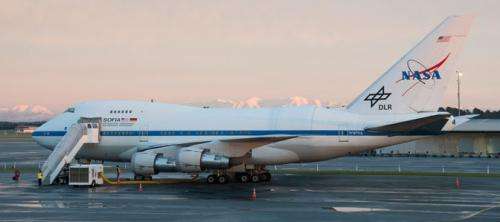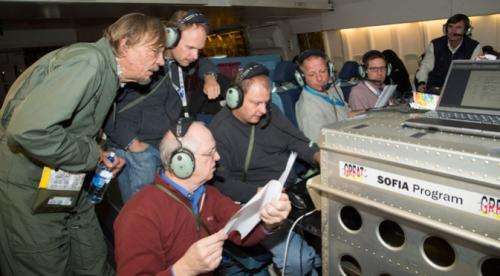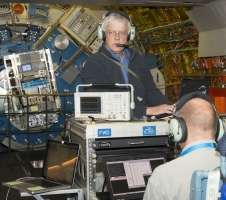SOFIA set to begin cycle two astronomy observations

NASA, the German Aerospace Center (DLR), the SOFIA Science Center, and the German SOFIA Institute (DSI) have announced the selection of 51 investigations to study the universe using the Stratospheric Observatory for Infrared Astronomy (SOFIA). SOFIA, a joint program between NASA and the DLR, is set to begin its second full cycle of science flights from February through December 2014.
The SOFIA observatory is a substantially modified 747SP aircraft that carries a telescope with an effective diameter of 100 inches (2.5 meters) to altitudes above 39,000 feet (12 km), beyond the obscuring layer of water vapor in Earth's atmosphere.
"More than 1,000 hours of observing time were requested, three times the amount available, evidence of SOFIA's desirability to astronomers," said SOFIA Science Missions Operations Director Erick Young in announcing the awards of observing time. "The approved projects make good use of the observatory's capabilities to study objects ranging from Earth's solar system neighbors to galaxies hundreds of millions of light years away."
As of Nov. 5, the SOFIA has conducted 23 of 30 planned Cycle 1 science flights, including nine flights during a Southern Hemisphere deployment to New Zealand from its base at NASA's Dryden Aircraft Operations Facility in Palmdale, Calif.
The newly announced observing period, known as Cycle 2, contains 47 science flights grouped into multi-week observing campaigns spread through an 11-month span. The Cycle 2 science flights include approximately 350 research flight hours, about 200 hours of which have been awarded to guest investigators whose proposals to do research using SOFIA were evaluated by either a U.S. or a German-chartered peer review panel.

In addition to the science flights planned for Cycle 2, the SOFIA program will undertake commissioning observations needed to make two more of the observatory's seven first-generation scientific instruments ready for use by guest investigators. Those instruments, the EXES (Echelon-Cross-Echelle Spectrograph), a high-resolution mid-infrared spectrograph, and the FIFI LS (Field Imaging Far-Infrared Line Spectrometer), will be available to researchers on a limited basis.
"In the past year, SOFIA has become a first-class asset to the world scientific community," said Pam Marcum, NASA SOFIA Project Scientist. "This SOFIA Cycle 2 announcement marks an important step in our progress toward routine operations. Infrared studies from these observations will enhance our knowledge of the life cycles of stars, how planets form, the chemistry of the interstellar medium, and much more."

SOFIA is a joint project of NASA and the German Aerospace Center (DLR). The aircraft is based at the Dryden Aircraft Operations Facility in Palmdale, Calif. NASA Dryden Flight Research Center manages the program. NASA Ames Research Center at Moffett Field, Calif., manages the SOFIA science and mission operations in cooperation with the Universities Space Research Association (USRA) headquartered in Columbia, Md., and the German SOFIA Institute (DSI) at the University of Stuttgart.
Provided by NASA



















